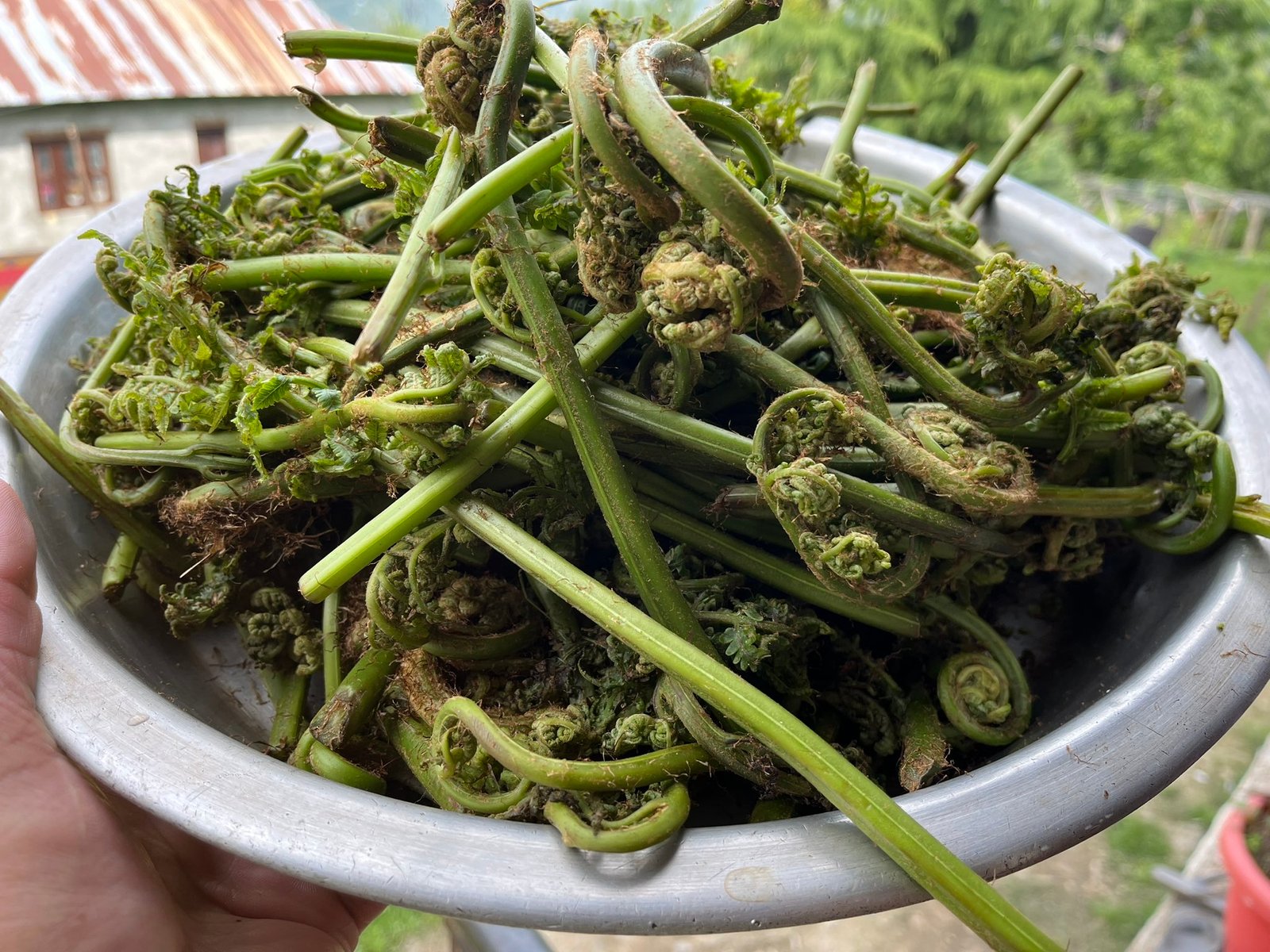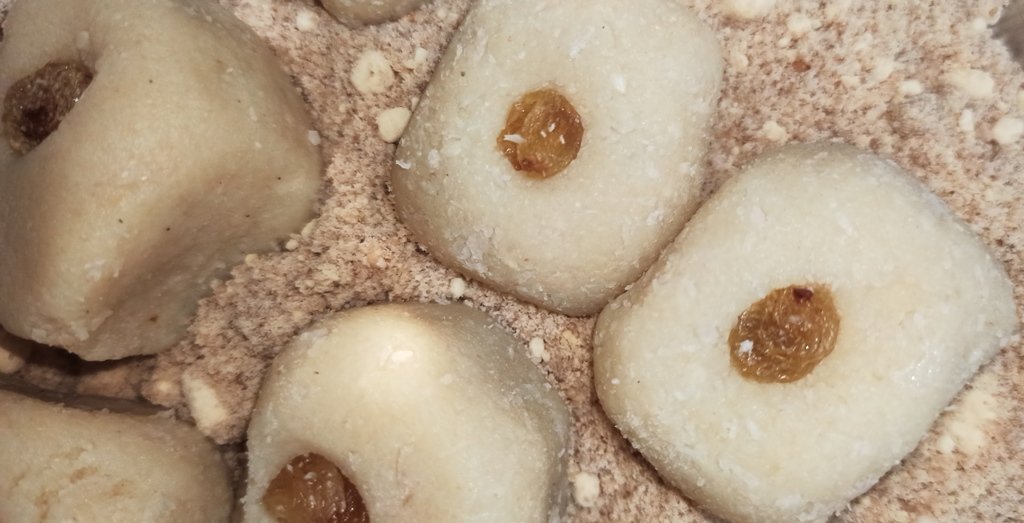Kasrod the Dogra delicacy and Himalayan superfood, also known as fiddlehead fern, is more than a seasonal delicacy—it is a natural medicine, a cultural treasure, and a nutritional powerhouse. Found in the temperate regions of the Himalayas, including Jammu and Kashmir, Himachal Pradesh, and Northeast India, this wild green has been part of traditional diets and healing practices for generations.
We’ll explore the nutritional value of kasrod, its cultural significance, health benefits, cooking methods, and precautions—while highlighting why this wild vegetable is gaining global attention as a superfood.
What is Kasrod (Fiddlehead Fern)?
Kasrod derives its name from its curled, spiral-shaped young fronds that resemble the head of a violin, or “fiddle.” Locally, it is known by different names:
- Kasrod in Jammu
- Kandor in Poonch
- Ted in Kishtwar
- Dheed in Ramban
The young stalks are deep green, measuring about 10–12 cm, and covered in brown scales that are removed before cooking. With a flavor similar to asparagus or green beans and a unique crunchy texture, kasrod adds variety to traditional cuisines.
Cultural and Culinary Importance in Jammu & Kashmir
In the Dogra cuisine of Jammu, kasrod is a staple seasonal vegetable. It is most commonly:
- Kasrod Da Achar: Pickled with spices to enhance its flavor and longevity
- Kasrod Ki Sabzi: Stir-fried with local spices and eaten with rice or chapati
The crunch, earthy flavor, and ability to absorb spices make it a beloved ingredient. Beyond taste, kasrod reflects cultural identity, sustainable foraging practices, and the preservation of traditional food systems.
Read also: Dals and Dogras: A Weekly Menu of a Traditional Dogra Household
Nutritional Value of Kasrod
Kasrod is extremely low in calories yet dense in vital nutrients. A 100 g serving contains just 34 calories and is packed with:
- Vitamins: Rich in Vitamin A, Vitamin C, and B-complex vitamins (niacin, riboflavin, thiamine)
- Minerals: Potassium (370 mg per 100 g), iron, manganese, copper
- Antioxidants: Carotenoids, polyphenols, and ?-carotenes that fight free radicals
- Essential fatty acids: Omega-3 and omega-6 for heart and brain health
- Dietary fiber: Promotes digestion and supports weight management
These nutrients collectively boost immunity, support healthy blood circulation, protect vision, and improve skin health.
Health Benefits of Kasrod (Fiddlehead Fern)
1. Boosts Immunity
The high Vitamin C content strengthens the immune system and enhances skin repair.
2. Supports Vision and Cell Growth
Vitamin A and carotenoids improve eyesight and encourage healthy cell development.
3. Prevents Anemia
Its iron-rich composition promotes hemoglobin production and prevents fatigue.
4. Aids Digestion and Gut Health
The fiber in kasrod aids smooth digestion, while pickled kasrod acts as a natural probiotic.
5. Fights Inflammation and Oxidative Stress
Traditional remedies use kasrod to treat wounds, inflammation, and skin problems. Antioxidants help prevent chronic diseases such as heart ailments, cancer, and neurodegenerative disorders.
6. Promotes Weight Management
Being low in calories and rich in fiber, kasrod is ideal for weight watchers.
Read also: Discover the Flavors of Jammu: Traditional Dogra Cuisine That Will Make You Crave More
Traditional Medicine and Folk Remedies
For centuries, rural and tribal communities have used kasrod in home remedies:
- Decoctions to relieve diarrhea, fever, and intestinal worms
- Topical application for skin problems and wounds
- Consumed as an anti-inflammatory and digestive aid
Such practices highlight the deep-rooted connection between food, health, and local wisdom.
Seasonal Foraging and Sustainability
Kasrod is a wild and seasonal plant, harvested only when the fronds are tightly coiled. Once they unfurl, they turn fibrous and may develop harmful compounds. This makes timing and knowledge of harvesting crucial.
As a naturally organic and chemical-free food, kasrod supports sustainable food systems. Foraging promotes biodiversity conservation and provides affordable nutrition to rural communities. Commercialization through local markets and pickled products also empowers women and small-scale farmers.
Precautions and Safe Consumption
While kasrod offers numerous health benefits, it must be prepared carefully:
- Never eat raw or undercooked kasrod, as it may contain thiaminase, which depletes Vitamin B1.
- Boil or steam for 10–15 minutes and discard the water to remove harmful compounds.
- Cooking enhances both its safety and flavor.
Modern Relevance of Kasrod as a Superfood
With growing global interest in organic foods and functional nutrition, kasrod is being recognized as a superfood from the Himalayas. Its unique combination of traditional knowledge, sustainability, and health benefits makes it highly relevant in today’s wellness-focused lifestyle.
Promoting kasrod not only protects traditional food heritage but also aligns with the UN Sustainable Development Goals by encouraging responsible consumption and production.
Kasrod is far more than a wild vegetable. It is:
- A nutrient-dense food that boosts immunity and prevents disease
- A cultural delicacy rooted in Himalayan traditions
- A sustainable, organic food source that supports biodiversity and local communities
By embracing kasrod in modern diets—whether through pickles, stir-fries, or traditional recipes—we reconnect with nature’s medicine while preserving heritage. As research continues, this humble fiddlehead fern stands out as a symbol of health, sustainability, and tradition.
















